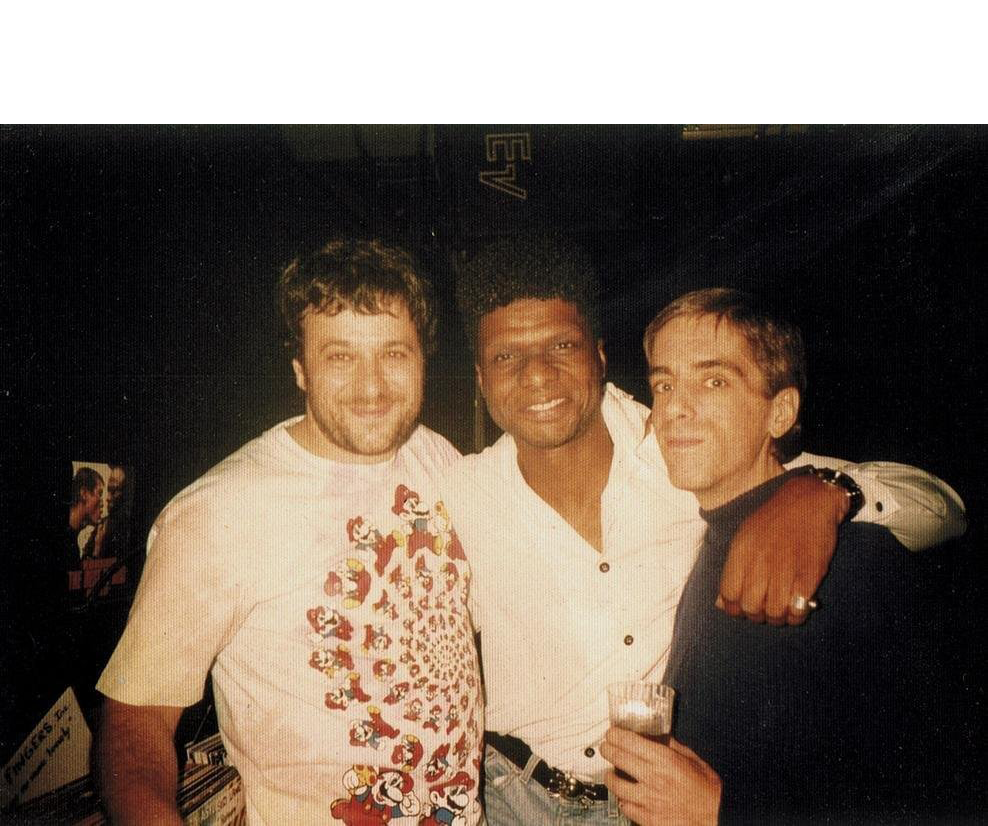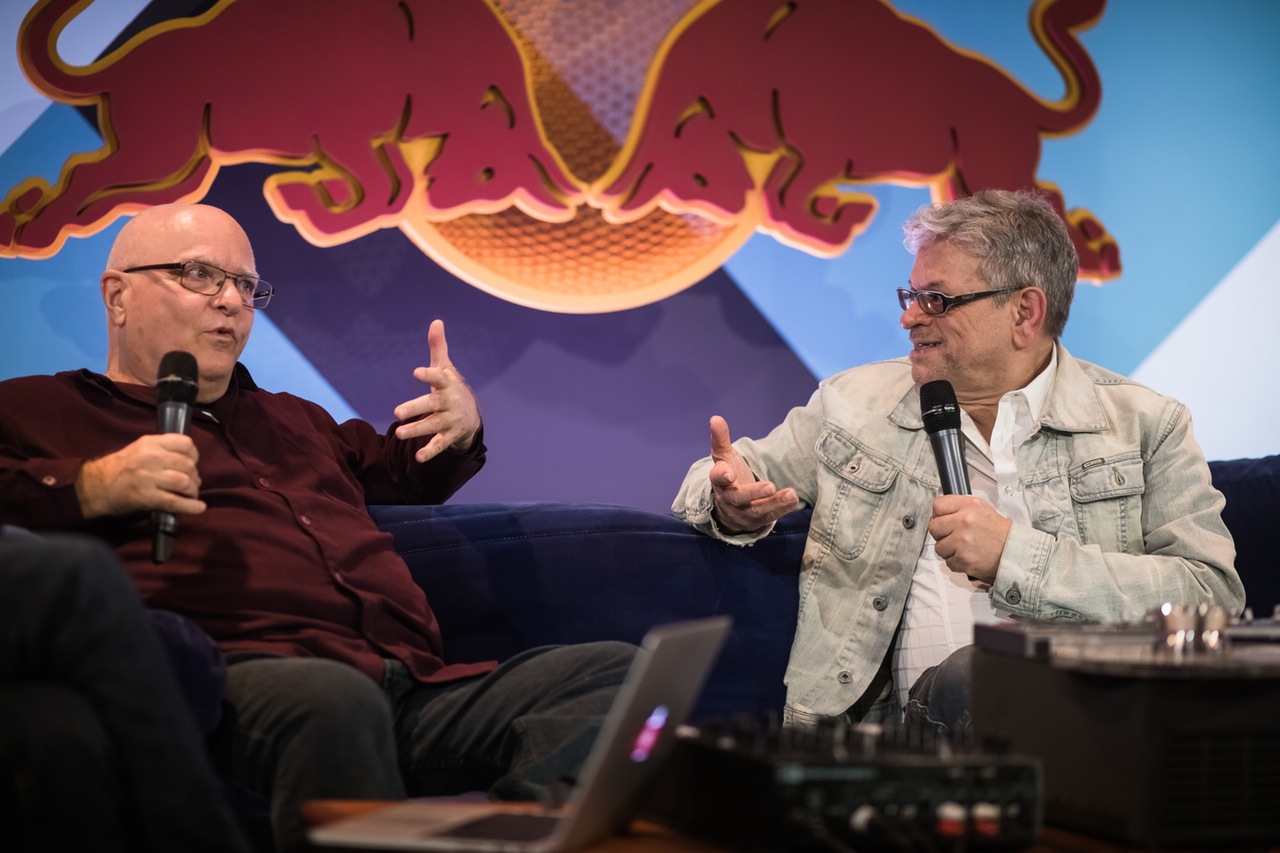PAJ Disco: Pioneers of the Edit
Dimitri Nasrallah talks to Pierre Gagnon, one-third of the pioneering disco edit crew
PAJ Disco Mix was an unheralded force behind Montréal’s disco dance floors. In the mid-to-late ’70s, when famed Lime Light DJ Robert Ouimet needed an exclusive extended version of a club anthem, he turned to Pierre Gagnon, Allen Vallieres and Jean Barbeau for their peerless edit work. The trio was known to work intensively on songs, splicing and stitching reel-to-reel tapes hundreds of times over to draw out conspicuously loopy versions tailor-made to detonate dancefloors.
In the golden age of disco, the edit was not the semi-officially sanctioned remix it is today. Disco edits were destined to gather dust in the DJ booth after they had run their course on a club’s reel-to-reel machine, never to see release. That was unfortunately the case with PAJ Disco Mix, who made over 50 edits in their time together, reworking classic tracks by Salsoul Orchestra, Cerrone, Space and numerous others.
But PAJ Disco Mix’s attention to detail predicted the lengths that DJs would go to several generations later, once the edit finally gained traction as a viable form during the 21st century disco renaissance. From the loopy psychedelics of DJ Harvey’s Black Cock Edit Series to house music micro-splicers such as Akufen and Soundstream, PAJ Disco Mix’s detailed approach to the edit has proven itself to be the way forward in the laptop era.
As disco mega-collector Al Kent wrote upon discovering their treasure trove of work in 2010, “Given the period in which it was recorded, such brilliance resulting from a mastery of primitive tape machine technology can only be applauded.” Applaud it, we shall. In terms of exploring the possibilities of the disco edit, Montréal’s PAJ Disco Mix was there first. We sat down with Pierre Gagnon to talk about their largely undocumented story.
How did PAJ Disco Mix get started?
I met Allen in 1970, and I met Jean in 1974. I started because I was buying 45s, and there was this song in two parts – part one, part two, all instrumental on one side and the vocal on the other side. I wanted to join it together to make one song, and that’s how it started.
Allen was a drummer. He came out to the house, and we started doing mixes. It all started with cassette decks, pausing on cassette decks. Those mixes on cassettes, we got so good at them that we could do triplets. That means that when the song was playing, if we wanted to repeat a beat at 4, we could set the record to start playing right on the beat that we wanted to play. We paused immediately, repeated it another time, then a third time, to make a ta-ta-tum. We were able to do it on cassette with a pause button.
When did you first begin to get your edits into clubs?
We started going out at that time. I was 18, they were 17, and we used to go to the Lovers Disco Club in Laval. There was two clubs in Montréal. There was Lovers Disco Club, and there was the Lime Light. In ’76, we used to go the Lovers Disco Club.
At one point, we said, “Okay, we’re going to go to speak with the owner, not the DJ. We said to him, “We’re doing remixes.” He said, “Oh yeah?” We said, “We’re going to do it for you.” He says, “Do me a remix of all André Gagnon’s ‘Wow’ and ‘Surprise.’” Two instrumental songs, but in a disco style. So we made it for him, and our edits started playing on the radio because the Lovers Disco Club was playing on the radio.
It was our mix that was playing on the radio. The show was one or two hours per week, but they made sure they played that because they were the only ones to have it. It started like that.
How did you connect with Lime Light DJ Robert Ouimet?
We did a remix of Bumble Bee’s “Love Bug.” In June ’76, we went to the Lime Light on a Saturday night, nine o’clock at night. We go see Robert, give him the cassette. He played it. He said, “Oh.” But it was on cassette. The sound wasn’t good enough to play.
Robert said, “It’s good what you’re doing. You should do a remix of Peter Gun and ‘Spring Rain.’” I bought the record. It was not available in Canada, so I called France. Five days after, we received five 45s. We did that, came back to Robert, and it was okay.
So we bought two reel-to-reel tapes. Jesse Green’s “Flip” was the first remix on the reel-to-reel where we’re splicing. We went to Lime Light, we gave the reel-to-reel to Robert. He started playing “Flip” in front of us. And when it started playing, everybody in the Lime Light starts screaming. After that, every time a PAJ mix started to play, everybody in the club starts screaming. It was always like that.
From January, we did for one year at least one remix a week. Jean was doing his own remix, I was doing mine, same with Allen, and sometimes we merge idea on one mix. But very often it was I do this one, you do this one, you do this one.
How did your edits find their way to North America’s DJs despite never being officially released?
Robert was a member of the New York Record Pool. Robert was going to New York every week. So when we started giving him the remix, he started bringing it to New York, and in New York he made copies of the tapes. So every DJ, every member of the New York Record Pool received a copy of our tape. After that, some of the most popular, like “Flip,” like “Freedom to Express Yourself,” those were made on acetate on Sunshine Records. So they distributed them.
In ’78, we went to the American Disco Music Award in Boston. We were very surprised. We were with Robert Ouimet. We arrived there. We’re in the lobby of the hotel where everybody’s speaking to everybody. The Village People were there, and everyone asks, “Who are you?” PAJ Disco Mix. Everybody knew us. The mouth-to-mouth had made its way. Also, there was the success of “Music” by Montréal Sound. Tom Moulton wrote a really good article on that remix. He said it was too much. It sold over half a million copies.
How were your disco edits different than the other edits and remixes that were being made in the ’70s?
I have listened to a lot of the stuff that DJs did at that time. In New York, so they either had access to the multitrack or they started to sample for rap. Here, we didn’t have that access. That’s what pushed us to redo music. Rewrite the music. Walter Gibbons never rewrote music by splicing, changing the time and repeat it to make a new melody. We used to do that.
They did maybe three or four splices in a remix. We, at that time, did 200 splices. We did all that only with the stereo track. That’s what forced us to develop the editing to the point that we think, today, that we were at the origin of sampling and looping, because we were the only ones.
In August ’77, after doing 40 remixes in six months, we said to ourselves, let’s do 1,000 splices in 18 minutes. One month later, we did 2,000 splices in 22 minutes. The 2,000 splices, on “PAJ 2000,” there’s a splice at every single beat. It was our experiment. Reverse a song. Rewrite the music.
Another experiment was to have instruments. Allen played drums and a bit of piano. We did a remix of “The Deep” with an old piano that I have at my house, and we recorded the piano on top of it. On “PAJ 1000,” there’s a section with Giorgio Moroder’s “From Here to Eternity.” We added an ARP synthesizer. We were always looking to try new things.
When you take a piece of tape and you cut it the way you want it, you can have different effect of sound because we starting cutting straight, cutting in angle, cutting sometimes four times for tempo in two. The left was separate than the left on another part. That’s starting to be crazy, because nobody is cutting tape like this.
Walter Gibbons, John Luongo, John “Jellybean” Benitez, François Kevorkian, those guys made editing, but they didn’t rewrite music with editing. That’s why we said that we are the ones who really started that, who made it so evident for people who had our music just to be inspired by this.

